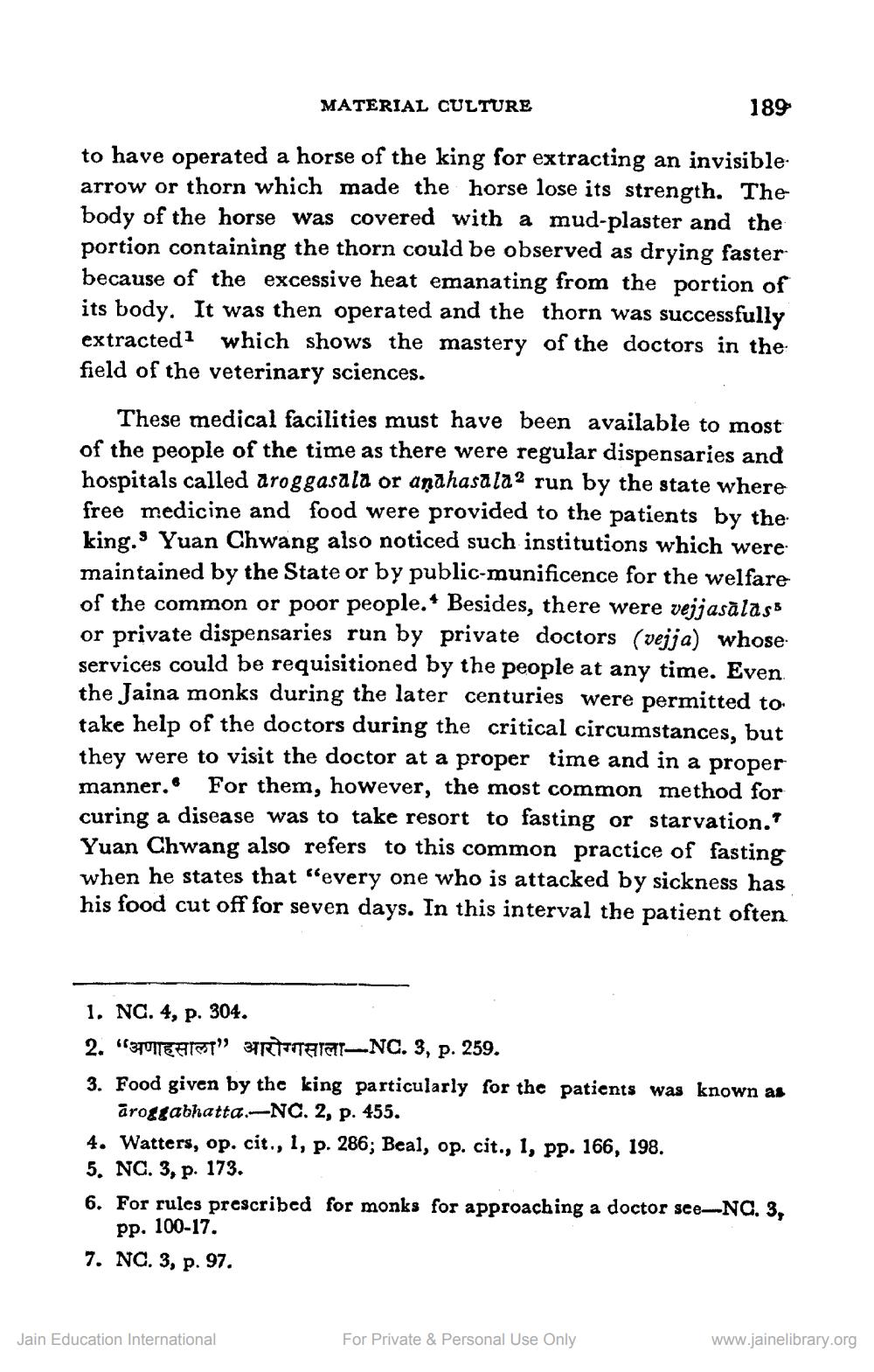________________
MATERIAL CULTURE
189
to have operated a horse of the king for extracting an invisible arrow or thorn which made the horse lose its strength. The body of the horse was covered with a mud-plaster and the portion containing the thorn could be observed as drying faster because of the excessive heat emanating from the portion of its body. It was then operated and the thorn was successfully extracted which shows the mastery of the doctors in the field of the veterinary sciences.
These medical facilities must have been available to most of the people of the time as there were regular dispensaries and hospitals called aroggasala or anahasala2 run by the state where free medicine and food were provided to the patients by the king.' Yuan Chwang also noticed such institutions which were maintained by the State or by public-munificence for the welfare of the common or poor people. Besides, there were vejjasalass or private dispensaries run by private doctors (vejja) whose services could be requisitioned by the people at any time. Even the Jaina monks during the later centuries were permitted to take help of the doctors during the critical circumstances, but they were to visit the doctor at a proper time and in a proper manner. For them, however, the most common method for curing a disease was to take resort to fasting or starvation." Yuan Chwang also refers to this common practice of fasting when he states that "every one who is attacked by sickness has his food cut off for seven days. In this interval the patient often
1. NC. 4, p. 304. 2. "TUITE ATT" BARTITAMAT-NC. 3, p. 259. 3. Food given by the king particularly for the patients was known as
aroggabhatta.--NC. 2, p. 455. 4. Watters, op. cit., 1, p. 286; Beal, op. cit., 1, pp. 166, 198. 5. NC. 3, p. 173. 6. For rules prescribed for monks for approaching a doctor sce-NC. 3,
pp. 100-17.
7. NC. 3, p. 97.
Jain Education International
For Private & Personal Use Only
www.jainelibrary.org




